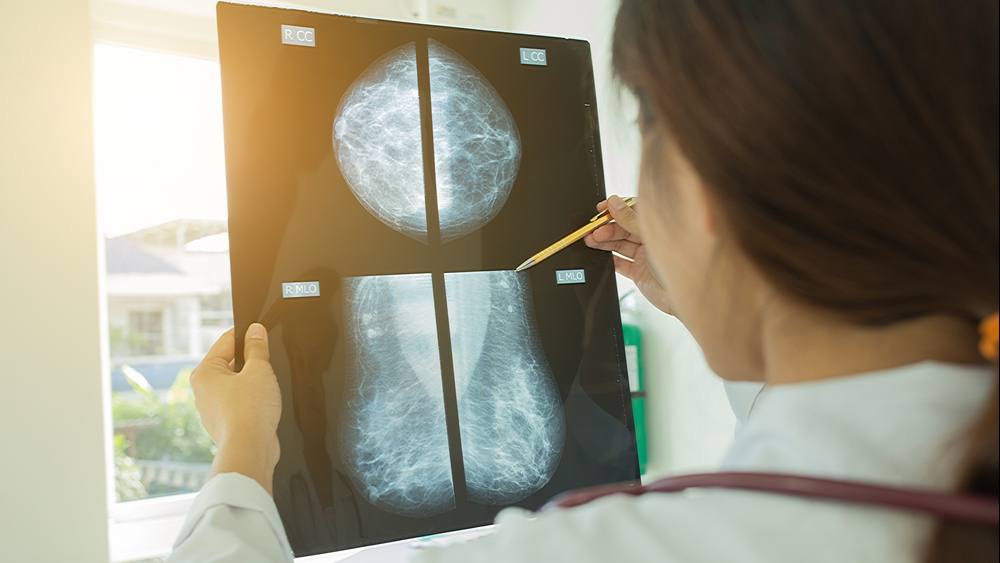-
Arizona
Expert Alert: Accelerated breast cancer treatments at Mayo Clinic provide more options for patients during pandemic

ROCHESTER, Minn. ― Radiation therapy for breast cancer can be grueling and disruptive, stretching out for as long as five to seven weeks, and often requiring extended time off from work or away from home. But research over the past decade, as well as new technology and innovations at Mayo Clinic, has led to treatment alternatives that are shorter, more targeted and just as effective.
For one example, over the past five years, Mayo Clinic breast cancer experts have been evaluating a short course of partial breast irradiation (PBI), a type of radiation therapy given after lumpectomy only to the area of the breast from which the tumor was removed. It has long been established that lumpectomy plus whole-breast irradiation over an extended period of weeks achieves results comparable to mastectomy in early-stage breast cancer. Recent studies, however, have shown that certain patients who have undergone lumpectomy can have the same excellent outcomes with partial breast irradiation administered over a three-day period.
"This is a remarkable and welcome change for many patients," says Robert Mutter, M.D., a physician who leads Mayo Clinic's Breast Cancer Radiation Oncology Group. "When I was in training, many of these patients were routinely treated with five to six weeks of daily radiotherapy. At Mayo Clinic, patients now have opportunities to complete radiotherapy in as few as three days with markedly less exposure to normal tissue."
This three-day accelerated treatment protocol is one of several that Mayo offers for breast cancer patients, and these more targeted treatments can be especially helpful and valuable during the COVID-19 pandemic. Though the accelerated treatment protocols long predate the pandemic, many patients may not be aware of how options have changed for treating breast cancer. October is Breast Cancer Awareness Month, when attention is drawn nationally to educating the public about the most common type of cancer reported annually in the U.S.
Accelerated treatments can greatly reduce the number of trips to the hospital or clinic, which reduces risk for health care workers and patients.
"An important goal of our program since long before the pandemic began has been to limit the number of nontherapeutic trips to the hospital and clinic for our early-stage breast cancer patients," says Tina Hieken, M.D., a Mayo Clinic surgical oncologist who specializes in breast cancer. "One aspect of this is to limit the number of days needed for radiation treatments without compromising disease control and safety. Our expertise in short-course radiotherapy has enabled us to deliver lifesaving radiotherapy for breast cancer patients without significant treatment delays during the COVID-19 pandemic."
Elderly patients and individuals with significant health issues or comorbidities are at greater risk of COVID-19 infection and illness. "Our entire team, consisting of therapists, dosimetrists, physicists, nurses, nurse practitioners, physician assistants, physicians and support staff, takes enormous pride in the work we've been doing to deliver safe radiotherapy care through the pandemic," Dr. Mutter says.
Patients have access to advanced technology, including proton beam therapy, catheter-based brachytherapy, and other tissue-sparing techniques that may not be available at other centers. The Mayo Clinic Proton Beam Therapy Program uses pencil beam scanning, which Mayo investigators have shown reduces radiation exposure to healthy tissue.
Mayo Clinic has been evaluating the three-day partial breast irradiation protocol for over five years, including with proton therapy. "Proton beam PBI is attractive for selected early-stage breast cancer patients, as it nearly eliminates all exposure to the heart and lungs, and also reduces the volume of normal nontarget breast tissue exposed, compared with conventional X-rays," Dr. Mutter says.
An additional novel approach to partial breast irradiation that's available at Mayo Clinic in Rochester is internal radiation, or brachytherapy, which uses a catheter that is placed at the time of surgical procedure. This reduces the waiting time between surgery and the start of radiation treatments. At Mayo, brachytherapy begins just two days after surgery, and when the three-day partial breast irradiation regimen is used, the entire treatment, surgery and radiation can be completed in a single week. Dr. Hieken says that this approach is possible because of the close collaboration between the breast surgical oncology and radiation oncology teams in conjunction with Mayo's intraoperative frozen section pathology practice.
Among other accelerated treatment protocols used to treat breast cancer at Mayo is a recently adopted five-treatment whole-breast radiotherapy regimen, now a standard treatment option at Mayo for patients with early-stage breast cancer patients who may not be candidates for partial breast irradiation due to the presence of one or more adverse disease features. "Based on Mayo Clinic's own investigations as well as international research, the five-treatment whole-breast radiotherapy regimen produces similar disease control and impact on normal tissue as 15 treatments over three weeks, the previous standard," says Dr. Carlos Vargas, a radiation oncologist who has led Mayo's five-treatment whole-breast irradiation clinical studies.
These and other short-course protocols have been investigated for more than five years at Mayo Clinic in Arizona, Florida and Minnesota, and many of these options are available at Mayo Clinic Health System locations. Proton beam therapy has been available at Mayo Clinic in Arizona and Rochester since 2015.
Accelerated radiotherapy protocols are being investigated for other types of cancer, as well, but Dr. Vargas says it appears patients with breast cancer may be particularly appropriate for short-course radiotherapy regimens. "It appears that breast cancer is more sensitive to radiotherapy that is condensed into larger treatments," he says. "Thus, we can reduce the total dose administered to breast cancer patients while achieving the same excellent disease control outcomes with the same or lesser impact on normal tissue."
While some of the protocols are now considered standard of care because they've been investigated over a longer period of time and have been subject to large, multi-institutional randomized trials, others are unique offerings at Mayo Clinic. "Patients have not been observed for as long after certain short-course regimens, so we will need to continue to follow patient outcomes over the long term to optimize all our treatment approaches," Dr. Mutter says. "But the response from patients and the reported outcome data have been positive and encouraging."
###
About Mayo Clinic
Mayo Clinic is a nonprofit organization committed to innovation in clinical practice, education and research, and providing compassion, expertise and answers to everyone who needs healing. Visit the Mayo Clinic News Network for additional Mayo Clinic news and Mayo Clinic Facts for more information about Mayo.
Media contact:
- Joe Dangor, Mayo Clinic Public Affairs, newsbureau@mayo.edu







